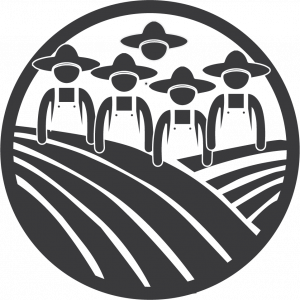
Community-based Sustainable Agriculture (CBSA) is undertaken by the organized members of the community based on a plan shaped from common objectives and founded on participatory baseline research. Meeting the basic needs of adequate and safe food, health and nutrition are prioritized in the development plan. The roles and aspirations of women farmers are studied through a gender assessment module.
Sustainable agriculture promotes diverse and organic-based food crop production, premised on agro-ecological conservation and enhancement. Diversified and Integrated Farming System (DIFS) constitutes the core technological approach in SIBAT’s model of sustainable food production. Its experiences have shown that DIFS proceeds even in rigorous resource-scarce conditions, as in Central Visayas, Philippines, or in highly-chemical based farming systems, as in Central Luzon, Philippines. It flexibly proceeds in stages or phases towards maturation.
Motivated by objectives of self-reliance, sustainable agriculture is based on local or indigenous knowledge of farmers, upon which their capacities and innovativeness in agriculture and in appropriate technology are built. It values and aims to restore and re-enshrine cooperation in the culture of the farming people.
Sustainable agriculture promotes social justice through land resource ownership and control, the empowerment of the disadvantaged groups and sectors, particularly of indigenous people and rural women. Sustainable Agriculture, especially in the hands of communities, consists the best adaption measures of agricultural resilience against climate change that continue to beset rural agricultural production.
DIFS has the following features:
Participatory research and community planning

This constitutes the conduct of a participatory baseline research on food needs, agricultural production, resources (land, water, seeds, biodiversity, biomass and other resources), gender roles, the community and its organization. After a collective analysis, development objectives are identified and a community development plan is formulated with the corresponding development indicators.
Technical resource assessment

This includes soil, water and genetic assessment. Outcomes here are incorporated in the community SA plan.
The Community SA Plan integrates the following:

- genetics conservation: comprised by community collection of traditional seeds with desired traits that are made to undergo systematic varietal adaptability trials or VAT (2-year cycle for main crops) at the farm level. The VAT successful varieties are then mass produced for food crops and genetic base for diffusion in the community and in other communities. Vegetable species and varieties follow the crop adaptability trial or CAT intended to enhance diversity of food crops in the community. Seed development (selection and breeding) follows for further improvement of genetic bases, and may take place in proceeding DIFS phases. The central role of women in genetics conservation is emphasized.
- Soil and water conservation. This is comprised, firstly, by soil and biomass assessment in the locality. Analysis of findings will then lead to the subsequent identification of appropriate technology (composting, biofertilization, integration of leguminous crops, and others), operational strategy (decentralized or centralized) and sustainability mechanisms. Soil conversion stages are identified under this step.
- Water availability and critical requirement for production will be assessed through a specific study, and solutions identified.
Community or communal farm production and development.

The communal farm is intended for demonstration as well as production where labor and produce are shared by members. Communal farm development is most feasible where farmers can decide on appropriate site and size of communal farms. Cooperator farms are comprised by home gardens and individual farm lots.
Postharvest development (milling, shelling, processing) is attended in this phase, as yield increase in the main crop is realized.

Here, feasibility study with farmer involvement is required towards designing the appropriate technology for post-harvest.
Household-based or individual farm development

Technologies acquired by farmers are applied in individual farms, assisted by the cooperative or labor sharing practices.
Advancement to integration

- crop and livestock integration to augment food sources and income, enhance nutrient recycling, optimize local farm resources to reduce dependence upon external inputs
- agro-forestry to enhance food production on the buffer areas along forest conservation and rehabilitation in depleted and resource-scarce upland zones
- aquaculture to provide additional protein sources to improve nutrition for the households
- livestock breeding and development at the farm level
- In mountainous zones, watershed conservation and protection is necessary and may have to be addressed at earlier phases.
Community enterprise development

The final phase sustains all the above components and installs crop-based enterprise development geared towards making the link to the market.
Capacity building is basic to develop and sustain CBSA. The development of capacities is a continuing concern at the farmer and the NGO partner levels. At the partner and community level, the training of individual farmer technicians, farm cooperators and the participants in communal demonstration farm development constitute the main stroke for building capacities and making SA take deep roots in the community.
